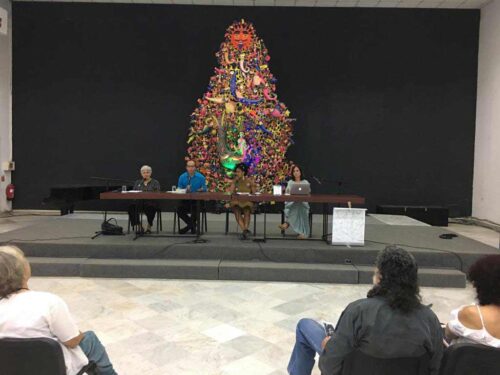At the beginning of the meeting in which speakers from more than 10 countries participate, Dra. Luisa Campuzano, director of the Women’s Studies Program of that cultural institution, highlighted the imprint of the Cuban heroine on the culture and politics of the revolutionary process in the Caribbean island
She also highlighted the extensive program of activities carried out by this center as a tribute to the assailant of the Moncada Barracks (July 26, 1953), a combatant from the Sierra Maestra, in hiding and in exile before the revolutionary triumph of January 1, 1959.
For his part, the playwright and essayist Jaime Gómez, vice president of Casa de las Américas, called attention to the need for “the Casa, Cuba and Latin America to publicize and delve into the figure and thought of Santamaría.” (1922-1980), which he considered transcendental for the region.
In this sense, he referred to the importance of spreading her ideas about the fundamental processes of the Revolution and about her connection with those that have occurred in Latin America since the founding of this institution in 1959.
He expanded on the most recent publications prepared on his life and work, among them “Life must be defended”, a compilation of texts on that simple woman, of peasant origin, who did not study at the university and became one of the most prestigious intellectuals in Cuba.
Gómez, one of the authors of the study along with Ana Niria Albo, a specialist from the Program of Studies on Latinos in the United States, explained that for Haydée the assault on the Moncada barracks, the struggles against the Batista dictatorship, exile, the revolutionary triumph of 1959 and his work at the Casa were part of the same struggle.
The compilation includes letters, exchanges with the population, interventions, articles, among other texts that shaped this 600-page work, in which the essentials were collected, so other materials were included in the latest issues of the magazine. House, with an important photographic selection.
In his speech, Albo drew attention to the coherence between the acts, conduct and leadership of the Heroine of Moncada, who fulfilled the objective of turning Casa de las Américas into Cuba’s connection with the world and a reservoir of the region’s cultural heritage.
For her part, journalist Esther Barroso, director of the documentary Nuestra Haydée, shared details of the path taken to achieve it in 2015 and how, as the investigation progressed, new and relevant stories were added about that woman who was able to decide even about his own death.
The documentalist explained that the investigations carried out gave her an irrepressible need to continue investigating Haydée, something that she continues to do with the idea that they could be part of a possible book.
ef/oda/mml









